Strong hamstrings are critical for overall body strength and mobility. These muscles, located at the back of your thighs, are essential for various daily activities – from simple tasks like walking to more strenuous ones like heavy lifting and high-intensity workouts. They contribute significantly to athletic performance and help prevent injuries. Moreover, strong hamstrings can promote better posture and alleviate lower back pain, emphasizing their importance in maintaining good health.
For enhancing hamstring strength, kettlebell exercises provide targeted workouts that boost muscle tone, flexibility, and power. This article introduces you to some of the most effective kettlebell exercises designed to strengthen your hamstrings. Let’s get started!
What are Hamstring Workouts?
Hamstring exercises are workouts that specifically target the muscles located at the back of your thighs, known as the hamstrings. These exercises are crucial for enhancing leg strength, promoting better posture, preventing injuries, and improving overall athletic performance.
How do kettlebells target hamstring muscles?
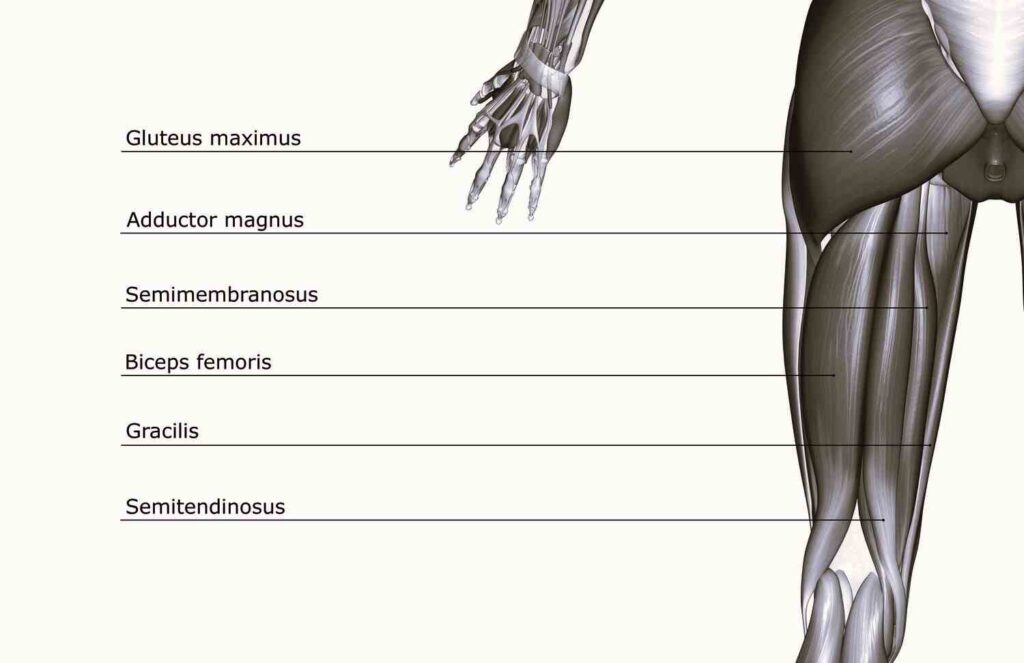
Kettlebell exercises are an excellent way to target the hamstring muscles. Here’s a list of the specific hamstring muscles that can be targeted by kettlebell workouts:
- Biceps Femoris (Long Head and Short Head): The Biceps Femoris is one of the primary hamstring muscles, and it’s significantly engaged in kettlebell swings, deadlifts, and snatches.
- Semitendinosus: This hamstring muscle is also targeted during kettlebell swings and deadlifts, as well as during single-leg Romanian deadlifts.
- Semimembranosus: Kettlebell squats, lunges, and swings can effectively work the Semimembranosus muscle, helping to enhance strength and flexibility.
Remember, while kettlebell exercises can effectively target these hamstring muscles, they also work other muscle groups simultaneously, providing a comprehensive, full-body workout.
Benefits of Hamstring exercises with kettlebells
Hamstring exercises with kettlebells offer numerous benefits that contribute to overall health and fitness.
- Healthier Knees and Hips: Strengthening hamstrings can lead to healthier knees and hips, reducing the risk of injury and enhancing mobility.
- Increased Speed and Explosiveness: Strong hamstrings can boost your speed and explosiveness, which is particularly beneficial for athletes involved in sports such as football, sprinting, and basketball.
- Aesthetics: Well-toned hamstrings contribute to a balanced and aesthetically pleasing physique.
- Mobility: Kettlebells provide a portable workout solution, allowing you to train your hamstrings anywhere.
- Core Engagement: Many kettlebell exercises also engage your core, promoting better posture and balance.
- Flexibility: Exercises like kettlebell swings can increase hamstring flexibility, improving your range of motion and decreasing the risk of injuries.
- Strength and Power: Kettlebell exercises can build strength and power in your hamstrings, which can enhance your performance in various physical activities.
7 Best Hamstring Exercises with Kettlebells
Here is the list of the 7 best Hamstring exercises with Kettlebells
- Kettlebell Swing
- Single-Leg Deadlift
- Kettlebell Lunges
- Kettlebell Squats
- Stiff-Legged Kettlebell Deadlift
- Kettlebell Sumo Squats
- Kettlebell Good Mornings
1. Kettlebell Swing
The kettlebell swing is a foundational kettlebell exercise that targets the hamstrings, glutes, hips, core, and the stabilizing muscles of your shoulders and back. It’s a ballistic movement that combines strength, power, and endurance training into one efficient motion.
A. Set-Up and Equipment Needed
All you need to perform a kettlebell swing is a kettlebell of appropriate weight for your fitness level and enough space to swing it. Ensure you have a firm grip to maintain control of the kettlebell throughout the exercise.
B. Step-by-Step Guide
Here’s a detailed breakdown of how to execute the exercise correctly:
- Initial Position
- Stand with feet hip-width apart, toes slightly pointed outwards.
- Place the kettlebell about a foot in front of you on the ground.
2. Execution of the Exercise:
- Bend at your hips and knees to grasp the kettlebell with both hands, keeping your arms extended.
- Lift the kettlebell off the ground and let it swing back between your legs.
- Thrust your hips forward, straighten your knees, and swing the kettlebell up to shoulder height. Keep your arms straight as you do this.
- Let the kettlebell swing back down between your legs as you bend your knees and hinge at your hips. This completes one rep.
3. Breathing Tips
- Inhale as the kettlebell swings down between your legs, and exhale forcefully as you swing the kettlebell upward.
Remember, form is crucial in this exercise to avoid injury and reap maximum benefits. Always keep your back straight and avoid using your arms to lift the kettlebell – the power should come from your hips and legs.
Benefits of Kettlebell Swing
- Full-Body Workout: The kettlebell swing works several major muscle groups at once, providing a comprehensive workout.
- Cardiovascular Fitness: With its fast-paced, repetitive motion, it can elevate your heart rate and improve cardiovascular fitness.
- Improved Posture: It strengthens the posterior chain (the muscles on the backside of your body), which can lead to improved posture.
- Enhanced Power and Endurance: Regularly performing kettlebell swings can increase both your muscular power and endurance.
2. Single-Leg Deadlift
The single-leg deadlift is a strength exercise that primarily targets the hamstrings, glutes, and lower back. It also engages your core and helps improve balance and stability by challenging your body to stabilize on one leg.
A. Set Up & Equipment Needed:
- You’ll need a kettlebell or dumbbell for this exercise.
- Choose a weight that’s challenging but allows you to maintain proper form.
- You’ll also need a clear space to perform the movement.
B. Step-by-step Guide
- Initial Position
- Stand tall with your feet hip-width apart, holding the kettlebell or dumbbell in your right hand.
2. Execution of the Exercise:
- Shift your weight onto your left foot.
- Start bending forward at the hips, lifting your right leg straight behind you as you lower the weight towards the ground. Keep your back straight and your core engaged.
- Lower until your torso and right leg are parallel to the floor, with the weight hanging down directly under your shoulder.
- Push through your left foot to stand back up straight, lowering your right leg back to the floor. That’s one rep.
- Repeat for your desired number of reps, then switch sides.
3. Breathing Tips
- Inhale as you lower the weight towards the ground, and exhale as you return to standing.
Remember to keep your back straight and your core engaged throughout the movement, and avoid letting your knee cave inward as you stand.
Benefits of Single-Leg Deadlift
- Strengthens Lower Body: This exercise strengthens and tones your glutes, hamstrings, and lower back.
- Improves Balance: As a unilateral exercise, it enhances balance and proprioception.
- Engages Core: It works your abdominal muscles, promoting a strong and stable core.
- Promotes Functional Fitness: The single-leg deadlift mimics real-world movements, enhancing functional fitness.
3. Kettlebell Lunges
Kettlebell lunges are a compound exercise that targets multiple muscle groups, including the quadriceps, hamstrings, glutes, and calves. It also engages your core and improves balance and coordination.
A. Set Up & Equipment Needed:
- A kettlebell of appropriate weight.
- Enough space to perform forward or backward lunges.
B. Step-by-step Guide:
- Initial Position
- Stand tall with your feet hip-width apart. Hold the kettlebell in both hands at your chest level.
2. Execution of the Exercise:
- Step forward with one foot while keeping the other foot in place.
- Lower your body until your front knee forms a 90-degree angle and your back knee hovers just above the ground.
- Push through your front heel to return to standing, bringing your front foot back to meet the other.
- Repeat on the other side. That’s one rep.
3. Breathing Tips
- Inhale as you lower into the lunge, and exhale as you push back up to standing.
Always maintain good form by keeping your chest lifted and your core engaged throughout the movement. Also, ensure your front knee doesn’t extend past your toes when you lunge.
Benefits of Kettlebell Lunges
- Strengthens Lower Body: This exercise effectively works your legs and glutes.
- Improves Balance and Coordination: Performing lunges with a kettlebell enhances balance and coordination.
- Engages Core: It strengthens your core, promoting better posture and stability.
- Enhances Flexibility: Lunges can help improve hip flexibility, which is beneficial for various daily activities and exercises.
4. Kettlebell Squats
Kettlebell squats are a compound exercise that works the entire lower body, including the quadriceps, glutes, hamstrings, and calves. By holding a kettlebell during the squat, you also engage your core and upper body, making it a comprehensive full-body exercise.
A. Set Up & Equipment Needed:
- A kettlebell of suitable weight for your fitness level.
- Enough space to perform squats without restrictions.
B. Step-by-step Guide:
- Initial Position
- Stand with your feet a little wider than hip-width apart, toes pointing forward.
- Hold the kettlebell in front of your chest with both hands, elbows close to your body.
2. Execution of the Exercise:
- Keeping your back flat and core braced, bend your knees and push your hips back.
- Lower your body until your thighs are parallel to the floor.
- Drive through your heels to return to standing, keeping the kettlebell at chest level. That’s one rep.
3. Breathing Tips
- Inhale as you lower into the squat, and exhale as you push back up to standing.
Always ensure that your knees don’t extend past your toes when you squat, and keep your chest lifted throughout the movement.
Benefits of Kettlebell Squats
- Full-Body Workout: This exercise targets multiple muscle groups, providing a more comprehensive workout.
- Strengthens Lower Body: It effectively strengthens and tones the legs and glutes.
- Improves Balance and Stability: The added weight of the kettlebell enhances balance and stability.
- Promotes Better Posture: By engaging the core and upper body, kettlebell squats can help improve posture.
5. Stiff-Legged Kettlebell Deadlift
The Stiff-Legged Kettlebell Deadlift is a posterior chain strengthening exercise that primarily targets the glutes, hamstrings, and lower back. It’s performed with the legs in a more fixed position than a traditional deadlift, which puts greater emphasis on these muscle groups.
A. Set Up & Equipment Needed:
- A kettlebell of suitable weight for your fitness level.
- Enough space to perform the deadlift without restrictions.
B. Step-by-step Guide:
- Initial Position
- Stand with your feet hip-width apart, holding the kettlebell with both hands in front of you.
- Keep your legs straight but not locked.
2. Execution of the Exercise:
- Keeping your knees slightly bent, hinge at your hips to lower the kettlebell towards the ground.
- Ensure your back is straight and your chest is lifted.
- Lower the kettlebell until you feel a stretch in your hamstrings.
- Drive through your heels to return to standing, keeping your back straight and the kettlebell close to your body. That’s one rep.
3. Breathing Tips
- Inhale as you lower the kettlebell, and exhale as you stand back up.
Maintain a neutral spine throughout the movement and avoid rounding your back.
Benefits of Stiff-Legged Kettlebell Deadlift
- Enhances Glute and Hamstring Activation: Since your legs remain locked during the movement, it utilises more glute and hamstring activation.
- Strengthens Lower Back: This exercise is effective in developing and strengthening the lower back.
- Improves Posture: Regularly performing stiff-legged deadlifts can help improve posture by strengthening the back muscles.
- Promotes Muscular Hypertrophy and Strength: It’s a viable training exercise to increase muscular hypertrophy and strength.
6. Kettlebell Sumo Squats
Kettlebell Sumo Squats are a variation of the traditional squat that emphasizes the muscles of the hips, glutes, and quads. Named after the stance taken by sumo wrestlers, this exercise requires a wider stance which helps to target your inner thighs more than traditional squats
A. Set Up & Equipment Needed:
- A kettlebell of suitable weight for your fitness level.
- Enough space to perform squats with a wide stance.
B. Step-by-step Guide:
- Initial Position
- Stand with your feet wider than shoulder width, toes pointing slightly outwards.
- Hold the kettlebell with both hands in front of you.
2. Execution of the Exercise:
- Keeping your back straight and chest lifted, bend your knees and push your hips back to lower into a squat.
- Lower the kettlebell towards the ground, keeping it close to your body.
- Push through your heels to return to standing, squeezing your glutes at the top. That’s one rep.
3. Breathing Tips
- Inhale as you lower into the squat, and exhale as you push back up to standing.
Remember to keep your knees in line with your toes as you squat, and avoid rounding your back.
Benefits of Kettlebell Sumo Squats
- Targeted Lower Body Workout: This exercise effectively targets the glutes, quads, and hips.
- Inner Thigh Engagement: The wide stance of a sumo squat works the inner thigh muscles more intensively.
- Improves Posture and Flexibility: Regular performance can enhance posture and flexibility in the lower body.
- Enhances Core Strength: The kettlebell adds an element of core and upper body engagement.
7. Kettlebell Good Morning
Kettlebell Good Morning is a hinge movement exercise that primarily targets the posterior chain – the hamstrings, glutes, and lower back. The movement gets its name because it mimics the motion of stretching and rising from bed in the morning.
A. Set Up & Equipment Needed:
- A kettlebell of suitable weight for your fitness level.
- Enough space to perform the exercise without restrictions.
B. Step-by-step Guide:
- Initial Position
- Stand upright with your feet hip-width apart. Hold the kettlebell at the base of the handle with both hands, resting it against the chest.
2. Execution of the Exercise:
- Keeping a slight bend in your knees, hinge at the hips and lower your torso forward while keeping the kettlebell close to your body.
- Lower until your torso is nearly parallel to the ground or until you feel a stretch in your hamstrings.
- Push your hips forward and squeeze your glutes to return to the starting position. That’s one rep.
3. Breathing Tips
- Inhale as you lower your torso, and exhale as you return to standing.
Remember to keep your back straight throughout the movement and move your hips back as you lower your torso. The movement should come from the hips, not the lower back.
Benefits of Kettlebell Good Morning
- Strengthens Posterior Chain: This exercise effectively targets the hamstrings, glutes, and lower back.
- Improves Hip Hinge Movement: Good Mornings can enhance your hip hinge movement which is crucial for other exercises like deadlifts and swings.
- Enhances Core Stability: Performing this exercise correctly requires and develops core stability.
- Improves Mobility: Regular practice of Good Mornings can improve mobility in the hips and hamstrings.
Incorporate Kettlebells Exercises:
Incorporating kettlebell exercises for your hamstrings into your workout routine can be easy and beneficial.
- Understand the Exercises: Learn the basics of hamstring-focused kettlebell exercises such as kettlebell swings, deadlifts, or good mornings.
- Warm-Up: Start your workout with a light warm-up that includes movements similar to your main workout.
- Variety is Key: Include various exercises in your routine to keep your muscles challenged and prevent plateauing.
- Form Over Weight: Always prioritize correct form over lifting heavier weights to avoid injuries.
- Consistency: Incorporate these exercises into your routine at least 2-3 times a week for optimal results.
- Listen to Your Body: Adjust your workout according to your body’s response. If you feel any discomfort, consider reducing the weight or adjusting your form.
Remember, the key to a successful workout routine is consistency and proper form.
Common Mistakes to Avoid
Hamstring exercises with kettlebells can be highly effective, but common mistakes can hinder your progress and lead to injuries:
- Poor Form: Incorrect form can strain your back and prevent you from effectively targeting your hamstrings. Always maintain a neutral spine and engage your core.
- Lifting Too Heavy: Starting with a weight that’s too heavy can compromise your form and lead to injuries. Start with a manageable weight and gradually increase as your strength improves.
- Skipping Warm-Up: A warm-up prepares your body for the workout, reducing the risk of injury. Never skip this step.
- Not Engaging Your Glutes: Hamstring exercises often require glute activation. Make sure you’re engaging your glutes throughout the movement.
- Rushing Through Reps: Performing your reps too quickly can lead to improper form and less effective muscle engagement. Take your time and focus on your movement.
- Ignoring Pain: If you feel pain during an exercise, stop immediately. This could be a sign of injury or improper form.
Preparing for Your Kettlebell Workout
Preparing for your kettlebell workout is just as crucial as the workout itself. Proper preparation not only enhances your workout performance but also reduces the risk of injury.
Importance of Warm-Up Routines
- A good warm-up routine prepares your body for the strenuous activity ahead. It increases your heart rate, warms up your muscles, and enhances joint flexibility. This is especially important when using kettlebells as they often involve dynamic and explosive movements.
- Incorporate exercises that mimic your workout movements. For instance, if you’re doing kettlebell swings, include hip hinges in your warm-up.
Safety Measures and Precautions When Using Kettlebells
Kettlebells, while effective, can pose a risk if not used correctly. Here are some safety measures to keep in mind:
- Proper Form: Always prioritize maintaining proper form over lifting heavier weights. Incorrect forms can lead to injuries.
- Suitable Weight: Start with a weight you can handle comfortably. Gradually increase as your strength improves.
- Grip: Ensure your grip is firm but not overly tight to avoid unnecessary strain.
- Space: Ensure you have enough space around you to perform your exercises without hitting anything.
- Footwear: Wear flat-soled shoes for stability.
- Rest: Don’t forget to rest between sets to allow your body to recover.
Proper preparation through warm-up and safety precautions are key to a successful and safe kettlebell workout.
Frequent Question Answers
By addressing the following frequently asked questions, we hope to provide clarity and guidance on incorporating the Hamstring Exercises with Kettlebells in your fitness routine. Remember to listen to your body, start at an appropriate level, and gradually progress for optimal results.
| Question | Answer |
|---|---|
| Do kettlebells work hamstrings? | Yes, kettlebells can effectively work the hamstrings. Kettlebell exercises such as kettlebell swings, deadlifts, and lunges can engage and strengthen the hamstrings, helping to improve muscle tone and overall lower body strength. |
| How do you strengthen your hamstrings with a kettlebell? | To strengthen your hamstrings with a kettlebell, you can perform exercises like kettlebell deadlifts, Romanian deadlifts, and single-leg kettlebell deadlifts. These exercises target and engage the hamstrings, promoting strength and muscle development. |
| Which two exercises target the hamstring muscle group using a kettlebell? | Two exercises that target the hamstring muscle group using a kettlebell are kettlebell swings and single-leg kettlebell deadlifts. Both exercises engage the hamstrings, helping to build strength and improve muscle tone in that area. |
| What exercise hits the hamstrings? | An exercise that specifically targets the hamstrings is the kettlebell swing. This exercise involves a dynamic hip-hinge movement that engages the hamstrings, glutes, and core muscles. It is a great way to strengthen and tone the hamstrings effectively. |
Conclusion
Incorporating kettlebell exercises can effectively target your hamstrings. Remember to maintain proper form, start with manageable weight, warm up before exercises, engage your glutes, and avoid rushing through reps. If you feel pain, stop immediately. With consistency and care, you can enhance your hamstring strength and overall fitness. So, why wait? Start your kettlebell journey today!
Sources
- 12 Best Hamstring Kettlebell Exercises + Sample Workout – This blog post from Gym Reapers highlights 12 effective hamstring exercises using kettlebells. It includes a sample workout to help you get started.
- 8 Best Kettlebell Hamstring Exercises for Runners – Kettlebells Workouts presents eight kettlebell exercises specifically designed to target the hamstrings. These exercises can be beneficial for runners looking to strengthen their leg muscles.
- 7 Kettlebell Hamstring Exercises You Must Try – BoxLife Magazine shares seven kettlebell hamstring exercises that can help improve strength and flexibility. The article provides detailed instructions on how to perform each exercise correctly.
- 6 Best Kettlebell Exercises for the Hamstrings (with Pictures!) – Inspire USA Foundation outlines six of the best kettlebell exercises that target the hamstrings. The article includes pictures to demonstrate proper form and technique.
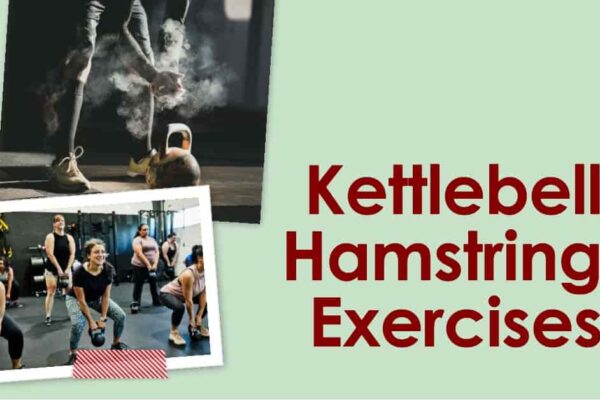


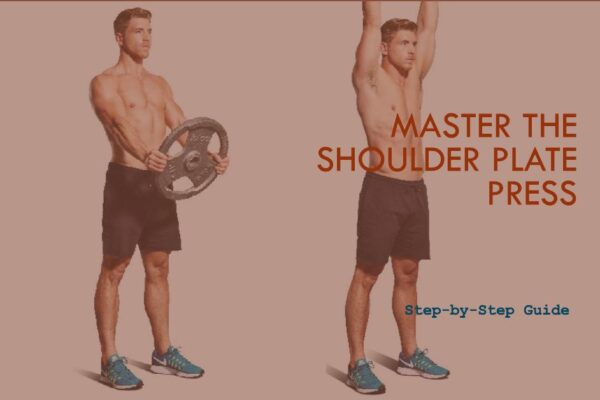
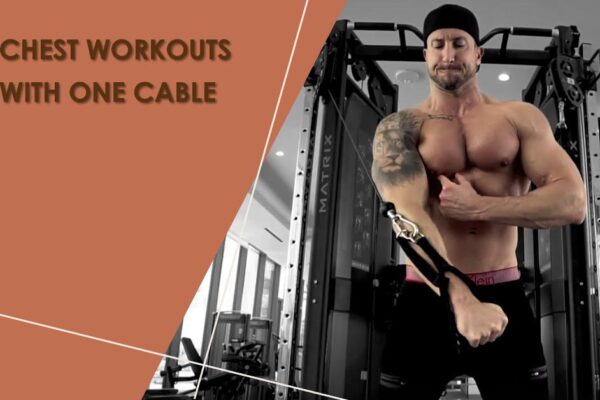
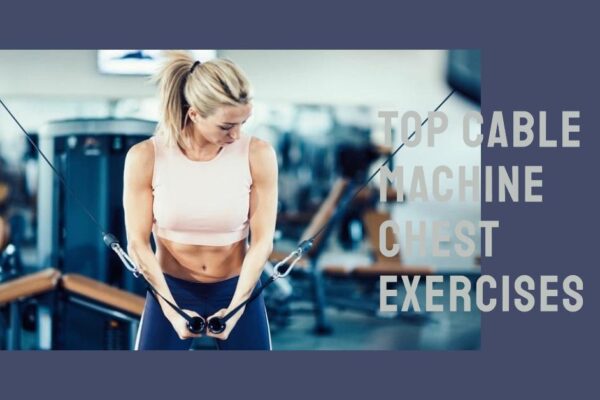
Leave a Reply